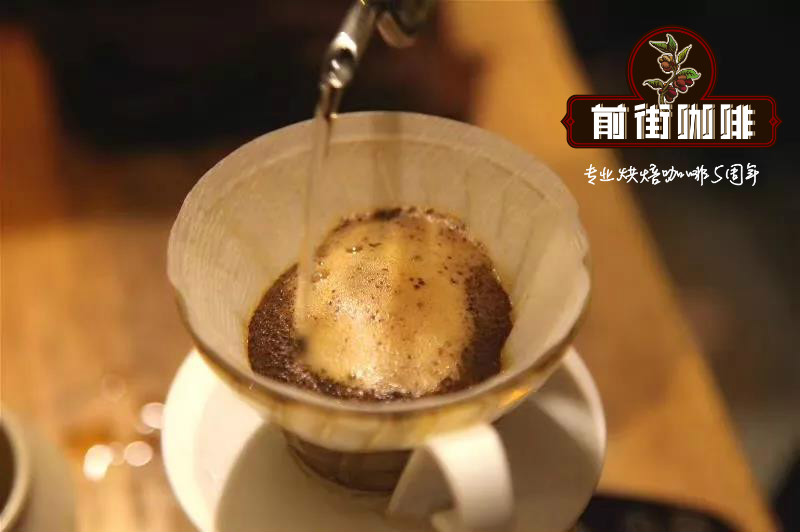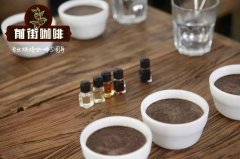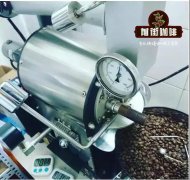Does Yunnan coffee taste good? Taste, flavor and cooking method of Katim in Yunnan

Professional coffee knowledge exchange more coffee bean information please follow the coffee workshop (Wechat official account cafe_style)
Katim, Yunnan
Treatment: red cherry sun treatment
Variety: Katim
Altitude: 1450-1550 m
Yunnan is located between 15 °N and the Tropic of Cancer, and most areas are 1000-2000 meters above sea level. The topography is mainly mountainous and sloping, with large ups and downs, fertile soil, sufficient sunshine, rich rainfall and large temperature difference between day and night. These unique natural conditions form the particularity of Yunnan small-grain coffee taste-strong but not bitter, fragrant but not strong, slightly fruity.
Baoshan Lujiangba began to grow coffee industry on a large scale since the 1950s. The red volcanic ash soil with perennial high temperature, suitable rainfall, sufficient light and rich minerals makes the natural conditions of growing coffee particularly advantageous. The coffee produced is of good quality and mellow flavor. Now Lujiangba has become the largest coffee variety base and one of the important producing areas in China.
[historical story]
Yunnan has the earliest history of growing coffee in China. In 1892 (18th year of Guang Xu of the Qing Dynasty), French missionary Tian Deneng planted the first coffee tree in Zhugula Village, Binchuan, Dali, which opened the prelude to the cultivation of coffee by Chinese mainland. Lujiangba in Baoshan, dry and hot valley climate is very suitable for the cultivation of coffee, because the back of Gaoligong Mountain coffee garden can reach 1500 meters above sea level. In 1952, the first trial in Baoshan area was just half of China's 100-year history of coffee. In the early days, Arabica varieties were introduced in the village, mainly iron pickup and bourbon.
In order to simply increase the yield, coffee farmers began to cut down the improved varieties of coffee with good flavor and planted varieties with poor flavor, but the varieties with very high yield were introduced at the initial stage of the introduction of s288 with resistance to leaf rust, and later introduced a more high-yielding Katim variety. the older generation of coffee people basically do not drink coffee, they just regard coffee as an economic crop, hoping to increase their income, so a large number of improved varieties of coffee are cut down. A high-yielding variety [Katim] was planted.
[producing area]
Coffee cultivation in Yunnan is mainly distributed in Lincang, Baoshan, Pu'er and Dehong, where there are natural resources of low latitude, high altitude and large temperature difference between day and night, which makes Yunnan a golden growing area for producing Arabica coffee with high quality. The average temperature of Baoshan is 21.5℃, and the highest is 40.4℃, which is basically frost-free all the year round. It is recognized as the best producing area of small-grain coffee. The small-grain coffee cultivated here is famous at home and abroad for its strong but not bitter, fragrant but not strong, well-proportioned small noodles, mellow and fruity.
[variety]
Katim: in 1959, the Portuguese mixed Brazilian Kaddura with Timo and bred the second generation of Cartimo, which has super disease resistance and yield capacity. But the flavor is also poor, and it is an important variety of commercial beans at present. In recent years, botanists from all over the world have turned to the interaction between Arabica and Katimodo in an attempt to reduce the pedigree of Luodou in order to improve the bad reviews of the Katimo Cup.
[red cherry tanning]
1. Harvest ripe coffee fruit
two。 Preliminary selection of impurities and inferior beans
3. Select floating beans: pour the coffee fruit into the sink, the ripe and full fruit will sink to the bottom of the sink, and the immature or incomplete fruit will surface.
4. Sun-drying: remove the ripe coffee fruit that sank at the bottom of the sink and spread it in the sun-drying field to reduce the moisture content from 70% to about 10-12%. Turn the fruit several times a day to dry evenly, and cover it at night to avoid moisture.
5. Remove the shell: after about two to four weeks of exposure, the outer layer of the coffee seed has been dry and hard, and then use a sheller to remove the shell.
Advantages: the treatment process is very simple, does not need to invest too many tools and equipment, and except for the steps of removing floating beans, it does not need to use water, the cost is low, and it is widely used in areas where water resources are not abundant and less affluent.
[raw beans and baking]
Katim raw beans look yellowish green with silver skin, which is flatter and has lower water content than Huaguoshan. And Huaguoshan silver skin is more, showing treasure green.
The furnace temperature is 200 degrees Celsius, the throttle is opened for 1 minute, the firepower is adjusted to 160C, the return temperature is 1:36 seconds, the temperature is 150.7 degrees Celsius, the smell of grass disappears completely, the dehydration is completed, the firepower remains unchanged, and the throttle changes 4.
In the 6th minute, the firepower was adjusted to 140, in the 7th minute, the firepower was adjusted to 120, and in the 8th minute, ugly wrinkles and black markings appeared on the bean table, and the smell of toast obviously changed to coffee, which could be defined as a prelude to an explosion. At this time, listen clearly to the sound of the explosion point. Start to explode at 8: 33 ", fire power is 90, the throttle is fully open, the firepower is adjusted to 20 degrees in the 9th minute, and the development of an explosion is 239 degrees. 05 ", put into the pot at 198.5 degrees, belongs to moderate baking.
[cup test and flavor]
Cup measuring apparatus: cup measuring cup, cup measuring spoon, 94 degrees hot water, COE recording meter, coffee beans, thermometer, timer, grinding degree BG 4m (China 20 screen pass rate 75%)
Process: break the slag 4 minutes after water injection, and score the cup according to the COE test table within 30 minutes.
Curve 1: the taste of cereals is obvious, the sour taste is bright, but the aftertaste is not enough, and the cleanliness is slightly worse.
Curve 2: soft citrus, fruit fermentation, cocoa, nuts, dark chocolate, herbs, wood
Line 3: also has caramel, cocoa, almonds, dried fruit, grapefruit peel flavor, rich caramel flavor
Line 4: bitter entrance, cut tobacco, spicy aftertaste, Chinese fir flavor, poor taste
After the cup test, it is discussed that the flavor of Line 2 is relatively high, and the flavor and taste are balanced. At the same time, the flavor of caramel on Line 3 is rich, the sour taste is calm, and the characteristics of Katim are retained, so the two curves are compared by hand.
[hand impact test]
The first time to cook:
V60 filter cup, water temperature 90 degrees, ratio of powder to water 1:15, grinding degree BG 5R (64% of China standard No. 20 sieve pass rate 64%), extraction time 2 00s
Manipulation: 30-125-227g, the first small water injection to 125g, the second slightly larger water flow to 227g
Line 1 flavor: the entrance is more obvious herbaceous flavor, citrus sour taste is obvious, accompanied by caramel, cocoa, but overall has a strong sense of astringency and miscellaneous flavor
Line 2 flavor: the entrance is bitter, although it has the flavor of caramel and dark chocolate, but it tastes unpleasant and tastes like bitter tea.
Judgment: miscellaneous taste and astringent taste are obvious, because the baking degree is shallow, the caramelization reaction is insufficient, and the decomposition of chlorogenic acid is incomplete, so line 1 is removed; the water temperature is high during cooking, and the powder-water ratio is fully extracted at 1:15, which brings out the bitterness of the latter stage, so in order to reduce the bitterness release, the powder-water ratio test at 1:14 was adopted.
Second adjustment:
V60 filter cup, water temperature 86 degrees, ratio of powder to water 1:14, grinding degree BG 5R (64% of China standard No. 20 sieve pass rate 64%), extraction time 1chrome 59s
Manipulation: 30-125-227g, the first small water injection to 125g, the second slightly larger water flow to 234g
No. 2 curve flavor: like a fortified version of balsam pear water, herbal tea, taste bad.
Judgment: reducing the ratio of water to powder and lowering the water temperature brings a concentrated version of bitterness, proving that the source of bitterness is due to manipulation, small flow water injection makes the taste fully released, the water temperature is still not low enough, the bitterness extraction speed is accelerated, and the concentration is too high, so it becomes concentrated balsam pear soup, need to use a lower water temperature, 1:15 powder-to-water ratio
The third adjustment:
V60 filter cup, water temperature 82-83 degrees, ratio of powder to water 1:15, grindness BG 5R (64% of China standard 20 sieve pass rate 64%), extraction time 1VR 58s
Manipulation: 30-125-227g, slightly faster circle speed, the first section of large water injection to 125g, the second section of larger water flow to 227g, the water column is higher
Curve 2 flavor: herbaceous flavor is not as heavy as before, there is a clear steady fruit acid, after cooling, there are caramel, dried fruit, cocoa, dark chocolate, herb, woody flavor, such a fast flush, can reduce the bitterness release in the middle and back.
Conclusion: Katim also has its own flavor characteristics, but in essence, the variety determines the general trend of the taste. Katim retains the Robusta gene of 1 big 4 and retains the herbs, wood and bitterness. but it can be adjusted by baking and hand flushing to weaken the bad flavor, while Huaguoshan prefers soft caramel, cream chocolate, honeydew flavor and brown sugar finish. Is it Katim or tin pickup that represents the regional flavor of Yunnan, or is it different varieties with different treatments? We're still exploring...
Related recommendation: Yunnan small coffee beans how to brew Yunnan small coffee brand recommendation
Important Notice :
前街咖啡 FrontStreet Coffee has moved to new addredd:
FrontStreet Coffee Address: 315,Donghua East Road,GuangZhou
Tel:020 38364473
- Prev

Introduction to Brazilian boutique coffee beans: what is the quality of Brazilian Santos coffee
Professional coffee knowledge exchange more coffee bean information Please follow the coffee workshop (Wechat official account cafe_style) the rich flavor slowly extends on the tongue, completely sweeping the entire taste, and lasted for dozens of minutes. 1. Palate: slightly sweet with soft acidity, sweetness has its unique round ripe taste, its unique sweet, sour, bitter taste is extremely elegant. two。 Aroma:
- Next

How many kinds of beans are there in Yunnan coffee? Which is better, Baoshan coffee or Xishuangbanna coffee?
Professional coffee knowledge exchange more coffee bean information please follow the coffee workshop (Wechat official account cafe_style) is also called Yunnan coffee, why the taste is different? Because the origin is different! Xishuangbanna and Baoshan coffee, across thousands of mountains, the difference of 1000 miles can be one flavor? When it comes to Xishuangbanna and Baoshan coffee, the topic opens up, which can be said to be Yunnan coffee.
Related
- Detailed explanation of Jadeite planting Land in Panamanian Jadeite Manor introduction to the grading system of Jadeite competitive bidding, Red bid, Green bid and Rose Summer
- Story of Coffee planting in Brenka region of Costa Rica Stonehenge Manor anaerobic heavy honey treatment of flavor mouth
- What's on the barrel of Blue Mountain Coffee beans?
- Can American coffee also pull flowers? How to use hot American style to pull out a good-looking pattern?
- Can you make a cold extract with coffee beans? What is the right proportion for cold-extracted coffee formula?
- Indonesian PWN Gold Mandrine Coffee Origin Features Flavor How to Chong? Mandolin coffee is American.
- A brief introduction to the flavor characteristics of Brazilian yellow bourbon coffee beans
- What is the effect of different water quality on the flavor of cold-extracted coffee? What kind of water is best for brewing coffee?
- Why do you think of Rose Summer whenever you mention Panamanian coffee?
- Introduction to the characteristics of authentic blue mountain coffee bean producing areas? What is the CIB Coffee Authority in Jamaica?

